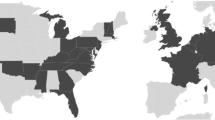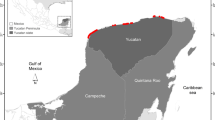Abstract
Pentalitomastix plethoricus Calt. was imported to Israel to aid in the biological control ofEctomyelois ceratoniae (Zell.). Two to 3 years following release in almonds the parasite was found established onE. ceratoniae with 12–15% parasitism. In carob plantations, on the other hand, 3 to 5 years after release the parasite was not recovered fromE. ceratoniae. We suggest that the type of host plant — almond in this case — is a determining factor for establishment of the parasiteP. plethoricus.
Résumé
Pentalitomastix plethoricus Caltagirone, parasite polyembryonnaire, a été importé de Californie en Israël pour aider dans la lutte biologique contreEctomyelois ceratoniae (Zeller), nuisible au fruit. Le parasite a été élevé en masse surE. ceratoniae et libéré dans des plantations de caroubier et d'amandier. Deux et 3 ans après sa libération le parasite a été retrouvé sur des amandiers où il a parasité 12% à 15% des chenilles deE. ceratoniae. C'est un degré de parasitisme élevé en comparaison avec le faible taux de parasitisme, environ 1%, deE. ceratoniae par des parasites indigènes. Dans des plantations de caroubiersP. plethoricus n'a pas été retrouvé. Il semble donc que la plante-hôte joue un rôle décisif dans l'établissement de ce parasite.
Similar content being viewed by others
References
Caltagirone, L. E. — 1966. A newPentalitomastix from Mexico. —The Pan Pacific Entomol., 42, 145–151.
DeBach, P. &Bartlett, B. R. — 1964. Methods of colonization recovery and evaluation. In: Biological Control of Insect Pests and Weeds. (DeBach, ed.). —Chapman & Hall, London, 402–426.
Gothilf, S. — 1964. Studies on the biology of the carob mothEctomyelois ceratoniae (Zeller) in Israel. —Nat. Univ. Inst. Agr. Bul., 76, (Hebrew with summary in English).
Gothilf, S. — 1968. The biology of the carob mothEctomyelois ceratoniae (Zell.) in Israel. I. Mass culture on artificial diet. —Israel J. Entomol., 4, 109–118.
Gothilf, S. — 1969. Natural enemies of the carob mothEctomyelois ceratoniae (Zeller). —Entomophaga, 14, 195–202.
Gothilf, S. — 1970. The biology of the carob mothEctomyelois ceratoniae (Zell.) in Israel. III. Phenology on various hosts. —Israel J. Entomol., 5, 161–175.
Wade, W. H. — 1961. Biology of the navel orange wormParamyelois transitella (Walker), on almonds and walnuts in Northern California. —Hilgardia, 31, 129–171.
Author information
Authors and Affiliations
Rights and permissions
About this article
Cite this article
Gothilf, S. Establishment of the imported parasitePentalitomastix plethoricus [Hym.: Encyrtidae], onEctomyelois ceratoniae [Lep.: Phycitidae] in Israel. Entomophaga 23, 299–302 (1978). https://doi.org/10.1007/BF02373105
Published:
Issue Date:
DOI: https://doi.org/10.1007/BF02373105




